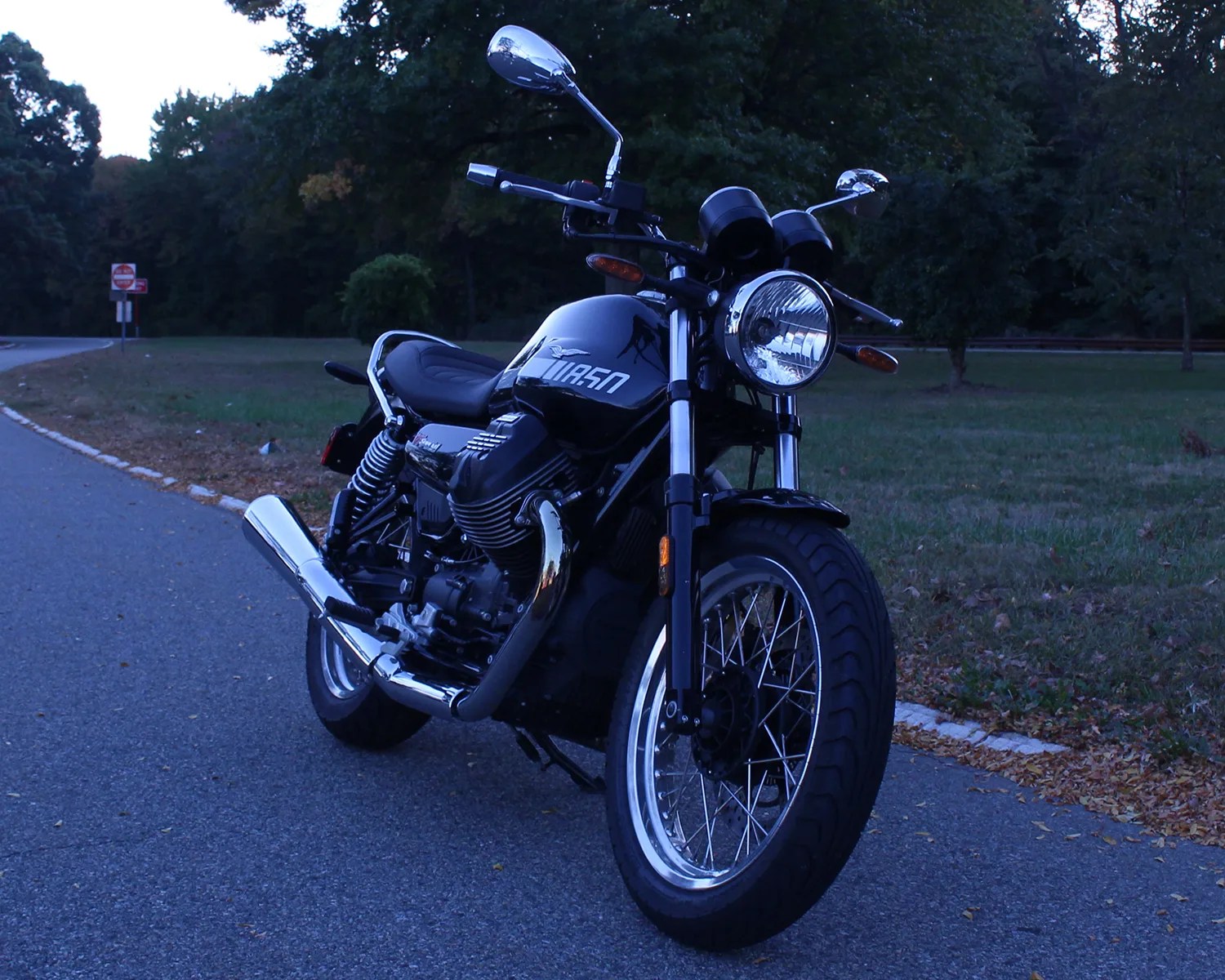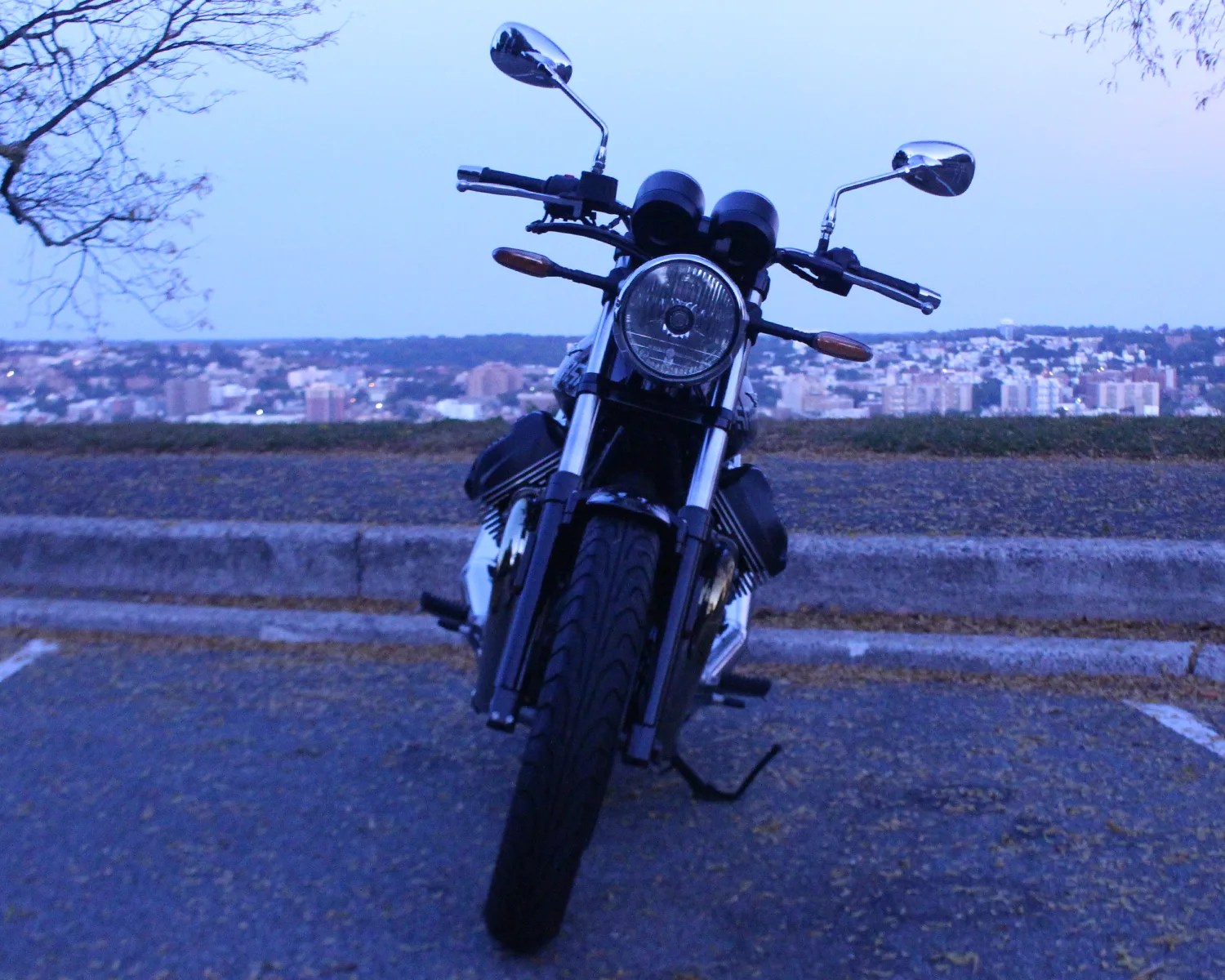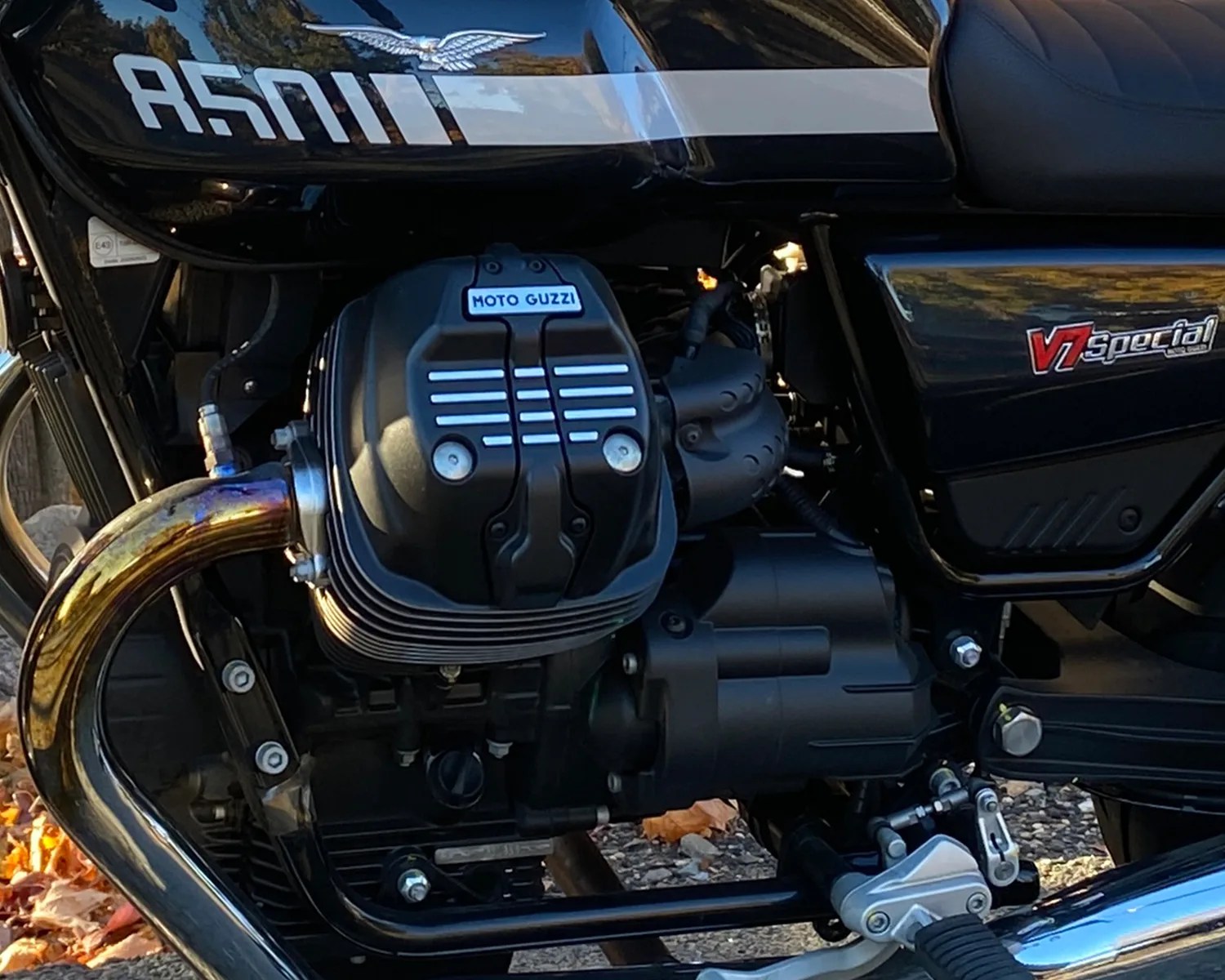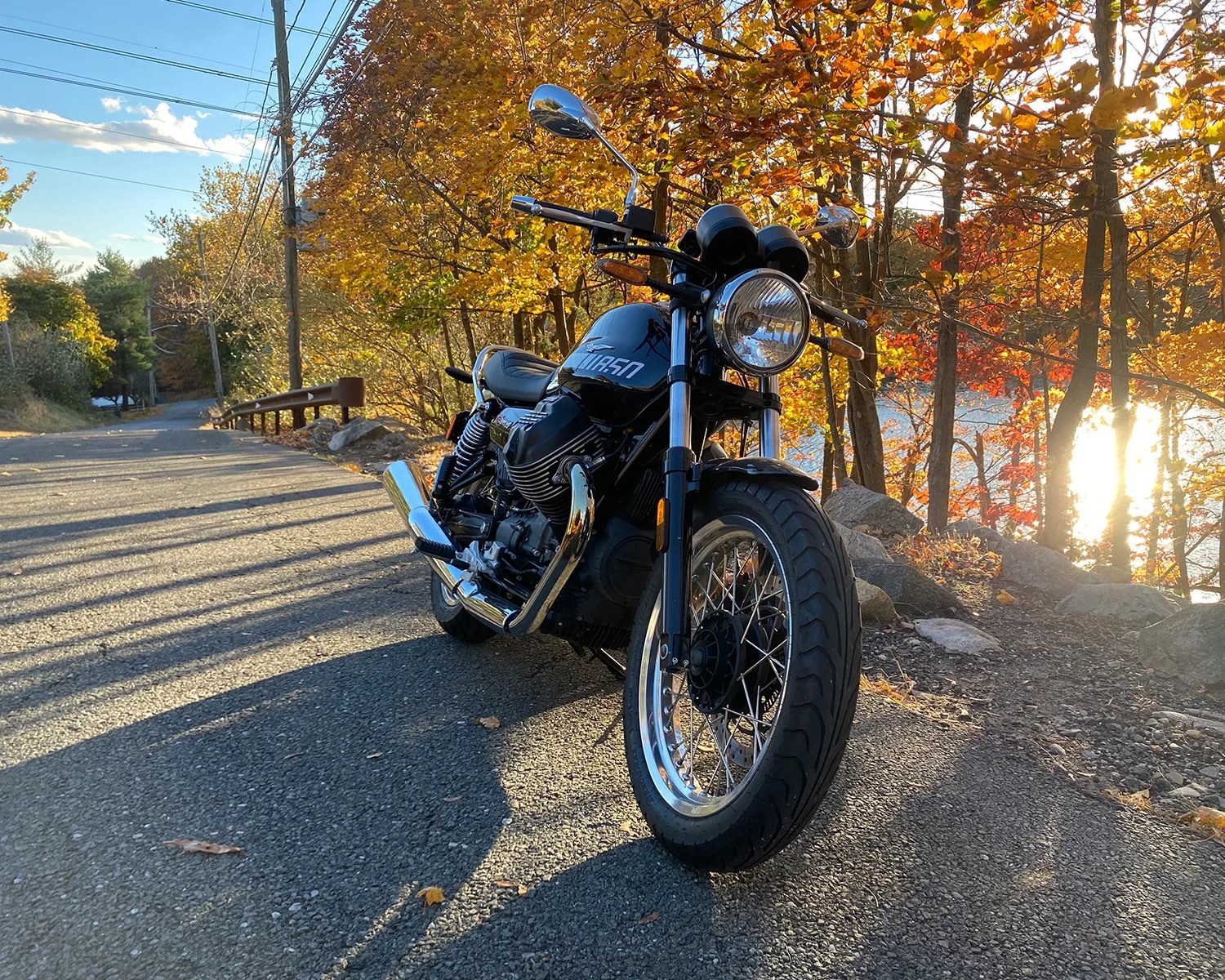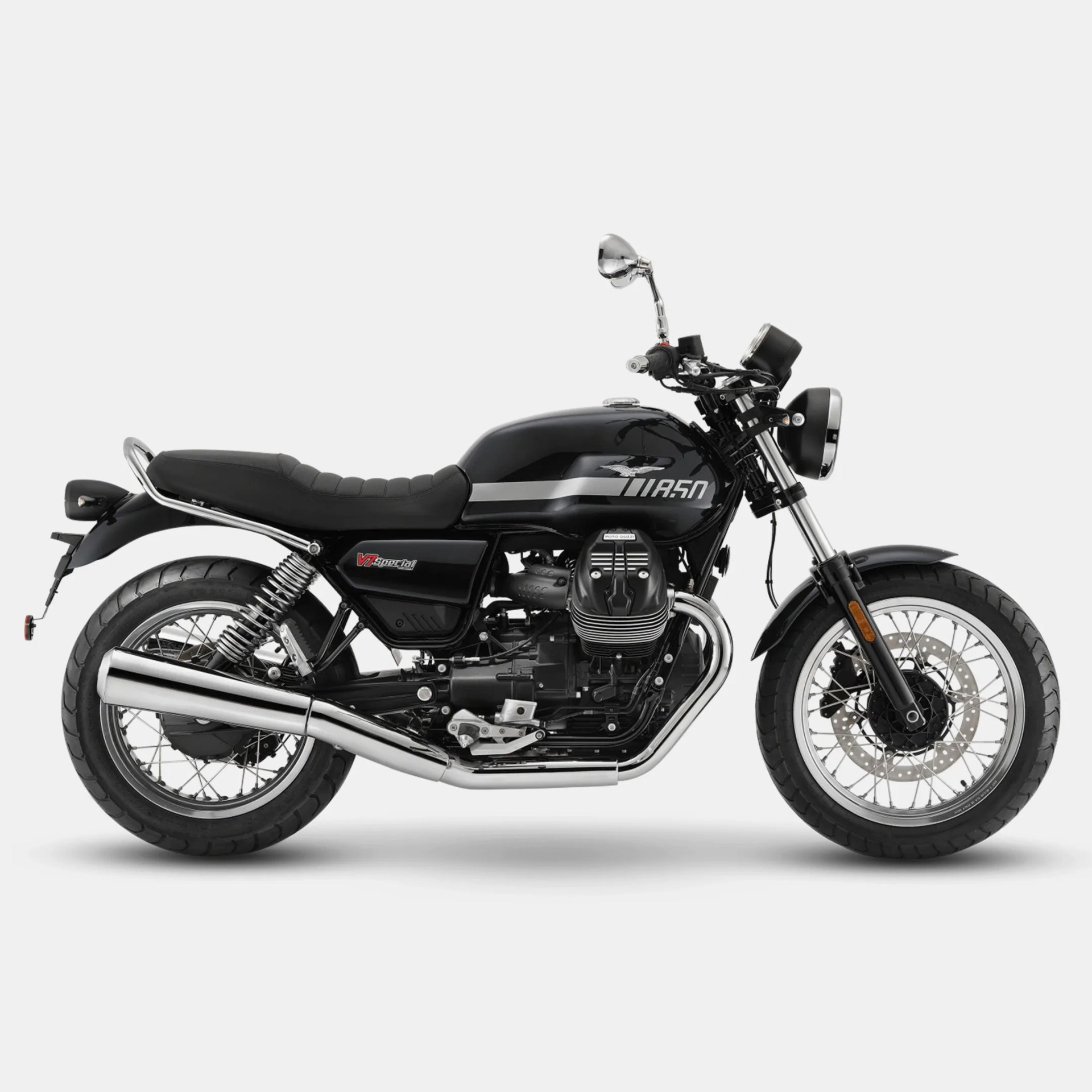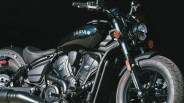The motorcycle wind tunnel. The eight-cylinder engine. The center stand. All these innovations can be attributed to Europe’s oldest continuously operating motorcycle manufacturer, Moto Guzzi.
Yet for most moto enthusiasts, that’s not the first thing that comes up in a game of word association. Nope, what comes to mind is more likely some version of “transverse 90-degree V-twin engine.”
Though the brand has undergone a number of ownerships over the past 57 years, the engine orientation has become its most iconic branding element — one you’ll find on V7s and the four other nameplates Moto Guzzi offers to this day.
It is without a doubt the most distinguishing feature of the 103-year-old Italian brand’s lineup of adventure, sport and street bikes.
But where the heck did this design approach come from, and what’s it like to actually ride? Grabbing seat time on a Moto Guzzi V7 Special recently, I found out.
